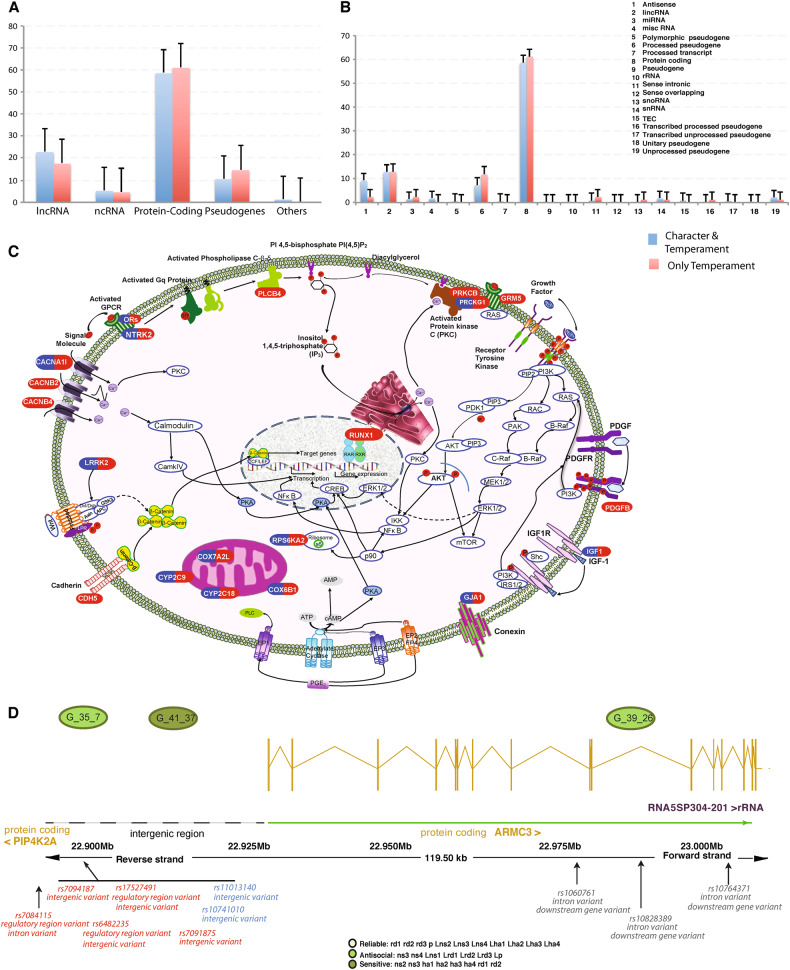Fig. 2.
a, b Types of genetic variants mapped by SNP sets associated with temperament. a Specific molecular consequences (Supplementary Table S5) and b their subtypes. Genes related only to temperament sets (red) were less often protein coding and more often RNA genes than those also associated with temperament sets (blue color). c Cell displaying the molecular pathways containing genes associated with the Sensitive and Antisocial profiles. The uncovered genes influence the Ras-MEK-ERK (MAPK), PI3K-AKT-mTOR, and Protein Kinase A, B, C pathways that regulate associative conditioning (see also Supplementary Tables S4, S7). d Multiple SNPs within a SNP set can affect a single or multiple genes in many ways (Supplementary Table S3). The PIP4K2A, the ARMC3 divergent regulatory region, and the ARMC3 coding region are illustrated. SNPs in the SNP set G_41_37 may affect regulatory regions (thereby inhibiting transcription), whereas SNPs from SNP set 39_26 are mostly located in intronic regions (thereby blocking or decreasing protein production). The SNP sets are associated with profiles exhibiting distinct temperament features (sensitive vs. antisocial)

